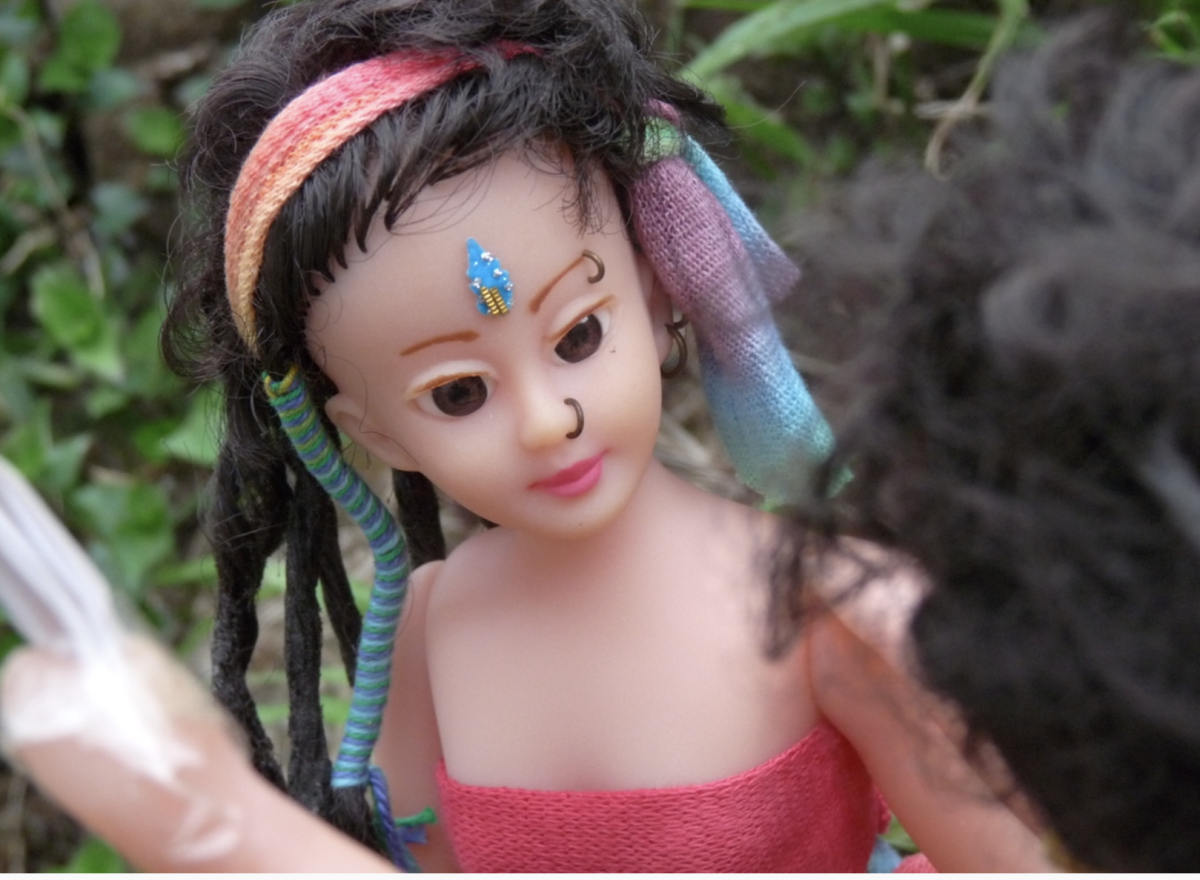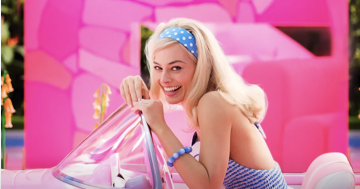
Feral Cheryl was designed as an antidote to the polished pink perfection of Barbie. Photo: feralcheryl.com.au
By all accounts, Barbie is a pretty good movie.
Directed by rising star Greta Gerwig with the glorious Margot Robbie in the title role, it’s a wry take on the ultimate blonde doll, the teeny tiny possessor of Kardashian-defying bodily proportions, impossibly blonde hair and wide blue eyes.
Helen Mirren does the omniscient voiceover and the movie is set in a world where the ladies are in charge, Ken is a bit of a goose and the punchlines are delivered with a wink and a nod.
You won’t have missed the advertising campaign either. The world is suddenly coated in pink sparkles, everyone’s social media feed is full of Ken and Barbie, superimposed on everything from the Eiffel Tower to the Belco owl.
You can even scan landmarks around the world with a Barbie app that will turn them candy pink, apparently “bringing Barbie world to life”.
This is, in effect, the world’s biggest advertising campaign. According to the New York Times (which reported $162 million takings in Barbie’s first weekend), “It’s a Barbie world. We’re all just living in it.”
Full confession: I may have gone a bit overboard when I banned my daughter from having a Barbie years ago. She was always more into horses and dogs, then her high school friends banded together to buy her one anyway (which was promptly butchered).
But I’ve always felt a bit uncomfortable about Barbie. It’s the hair and the waist. It’s especially the fact that Barbie’s feet are pre-arched for cripplingly high-heeled shoes. She depicts an ultra femininity that’s fine for those who like that sort of thing, but represents an extremely limited view of women.
Everything is pink, everything is girly, everything is pristine and bright and fresh and sweet natured.
Sure, she’s depicted on the toy store shelves as a brain surgeon and astronaut. The film includes Weird Barbie for balance, presumably, but in Barbie’s world there are no tired women who have forgotten to get the milk, are in a terminal fight with HR over their job description and are wondering when their feet will stop hurting.
Perhaps what irked me all along was being pitched this particular image of womanhood by a multinational company whose annual revenue is valued at $5.43 billion.
I therefore propose the return of Feral Cheryl as an antidote to all this polished pink perfection.
According to her website, Feral Cheryl was created 25 years ago up the coast as a tongue-in-cheek response to the Barbie doll.
“With dreadlocks, tattoos, piercings and bare feet, Feral Cheryl attracted international attention as a simply living eco-feminist anti-Barbie from the New South Wales North Coast.
“Tattoos and piercings are far from unusual now, but nature girl Feral Cheryl remains the only doll with a map of Tassie.”

Each Feral Cheryl is a unique (and accurate) representation of an adult woman. Photo: feralcheryl.com.au
Sports cars, fashion boutiques, a mansion, racks of tiny high heeled shoes and a beauty salon are missing. Instead Cheryl’s accessories are a bag of “herbs” and a sense of humour. Also, her feet are made for actual walking.
Cheryl was not the product of offshore sweatshop labour, being custom made at a family-run doll factory in South Australia. Originally created by ABC North Coast journalist Lee Duncan, she now has a place in the Tweed River Regional Museum.
Each doll is unique and, quite possibly, more closely resembles many a socks-and-sandal-wearing resident of the Inner North than Barbie does.
The cynical journalist in me says the Barbie film’s feminist message is all very well and good, but probably less important to Mattel than the movie’s phenomenal marketing opportunities.
Enjoy Barbie the movie and Barbie the doll by all means. But maybe give Feral Cheryl a run in the toy box too, and have a chat with the kids about how in 2023, women can dress however they please and do whatever they like.














